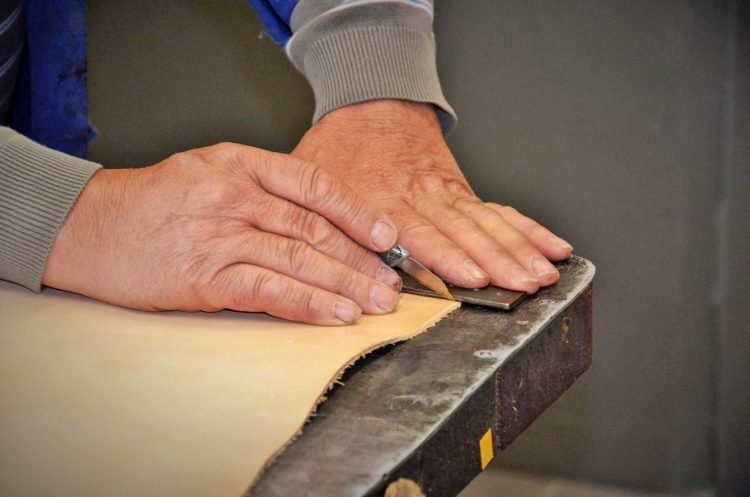Vegan fashion, viral videos denouncing animal abuse, pressure on companies that pollute… The leather industry takes the opposite view by displaying its CSR approach.
The best defense is attack. On June 21, during a press conference in Paris and online, Frank Boehly, President of the National Leather Council, presented the “CSR white paper”, corporate social responsibility, the leather industry. This is made up of 12,800 companies, 80% of which are SMEs and VSEs which bring together 133,000 employees carrying out around a hundred jobs. Economically, the sector achieves 25 billion euros in turnover per year, including more than 13 billion in export. Objective of the white paper? “Encourage companies and support them in the CSR approach, but also, “deal with ideas received by the public”, explains Frank Boehly.
In fact, through some of the themes addressed, the societal changes that are currently shaking up this sector with its ancestral know-how can be read implicitly: increased sensitivity to animal well-being, intolerance in the face of industries that pollute as well as the enthusiasm for vegan fashion. In response, part of the white paper is devoted to the objective of dialogue with consumers. “Having a responsible approach means agreeing to be transparent and to listen to consumers who are increasingly looking for information. But we see on social networks (…) that the abundance of information kills the info a little. Only what makes the ‘buzz’ emerge, sometimes to the detriment of concrete information”, believes Frank Boehly. Hence the importance of “pedagogy”, in particular on a specific subject: that of the limits of the leather designation, set for materials of animal origin by the decree of January 2010. designations for materials of plant origin (…). What we demand is clear communication on these materials and their composition,” points out Frank Boehly. Studies carried out by COTANCE, Confederation of national associations of tanners and tanners of the European Community and by the CTC, Center for research in the leather trades, lead to a series of conclusions: the physico-mechanical qualities of these materials would not make them not strong enough to make shoes. In addition, they would contain substances of synthetic origin, and not only natural…
Circular Economy Champion
In its white paper, the leather sector takes the opposite view by presenting itself as a “circular economy model”, promoted by the AGEC law (Anti-waste for a circular economy) of 2020. “Leather is a -product or co-product of the food industry. We raise animals for milk and meat, and the leather sector recovers the ‘5th’ quarter, everything that is not meat: hooves, horns, intestines, bones, skin, which could become waste if they were not valued and reused”, argues Franck Boehly. Several initiatives are there to convince consumers of the virtuous nature of the sector’s approach. This is the case of Innoshoe, a charter which guarantees the safety of products and their low environmental impact. Another initiative, the CTC has set up a traceability system for skins, marked with a laser on leaving the slaughterhouse, and followed up to the finished material. Eventually, traceability will have to extend to the finished product. The existing system is already operational for calf skins.
Another hot topic addressed by the white paper, that of animal abuse, on which the sensitivity of society is becoming ever more acute. “Videos are circulating to show the stress conditions of the animals that we condemn”, specifies Frank Boehly. But he recalls that the sector is subject to “French and European regulations, the most advanced in the world”, as well as numerous veterinary checks. In addition, the sector is also committed, in particular through awareness-raising actions with professionals. Especially since there is a link between animal welfare and skin quality.
Among the themes addressed is also that of “human capital”: it highlights the crucial issue of recruitment, in a country that values intellectual professions over manual ones: 10,000 jobs are for example to be filled in fashion and luxury …As such, the sector strives, in particular, to encourage all approaches to promoting its know-how. Like the EPV label, Entreprise du Patrimoine Vivant: 110 companies in the sector hold it. Local initiatives have also emerged, the most famous of which is perhaps that of Romans-sur-Isère (Drôme): the city has seen the birth of a “Shoe City”, the result of the efforts of an ecosystem of companies that have been working for years to revive the tradition of this former capital of the trade.









